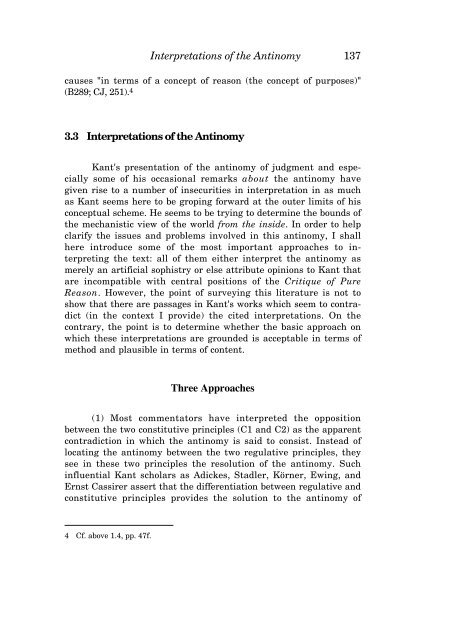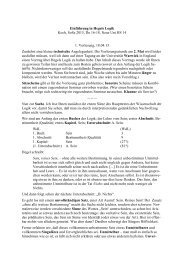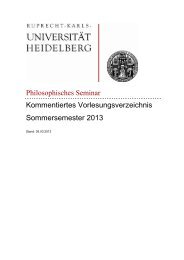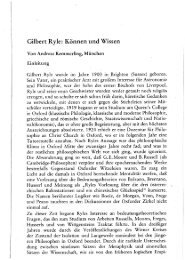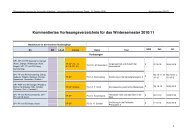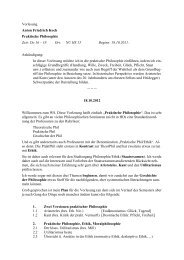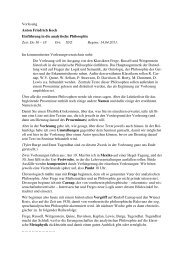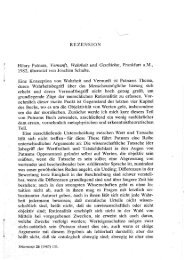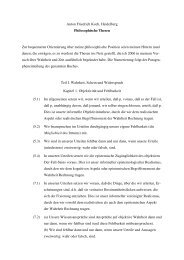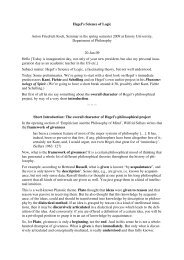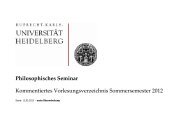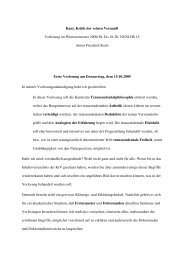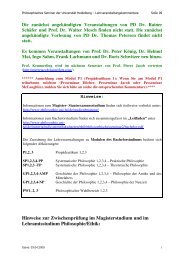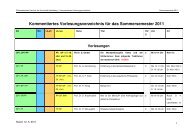KANT'S CRITIQUE OF TELEOLOGY IN BIOLOGICAL EXPLANATION
KANT'S CRITIQUE OF TELEOLOGY IN BIOLOGICAL EXPLANATION
KANT'S CRITIQUE OF TELEOLOGY IN BIOLOGICAL EXPLANATION
Create successful ePaper yourself
Turn your PDF publications into a flip-book with our unique Google optimized e-Paper software.
Interpretations of the Antinomy 137<br />
causes "in terms of a concept of reason (the concept of purposes)"<br />
(B289; CJ, 251). 4<br />
3.3 Interpretations of the Antinomy<br />
Kant's presentation of the antinomy of judgment and especially<br />
some of his occasional remarks about the antinomy have<br />
given rise to a number of insecurities in interpretation in as much<br />
as Kant seems here to be groping forward at the outer limits of his<br />
conceptual scheme. He seems to be trying to determine the bounds of<br />
the mechanistic view of the world from the inside. In order to help<br />
clarify the issues and problems involved in this antinomy, I shall<br />
here introduce some of the most important approaches to interpreting<br />
the text: all of them either interpret the antinomy as<br />
merely an artificial sophistry or else attribute opinions to Kant that<br />
are incompatible with central positions of the Critique of Pure<br />
Reason. However, the point of surveying this literature is not to<br />
show that there are passages in Kant's works which seem to contradict<br />
(in the context I provide) the cited interpretations. On the<br />
contrary, the point is to determine whether the basic approach on<br />
which these interpretations are grounded is acceptable in terms of<br />
method and plausible in terms of content.<br />
Three Approaches<br />
(1) Most commentators have interpreted the opposition<br />
between the two constitutive principles (C1 and C2) as the apparent<br />
contradiction in which the antinomy is said to consist. Instead of<br />
locating the antinomy between the two regulative principles, they<br />
see in these two principles the resolution of the antinomy. Such<br />
influential Kant scholars as Adickes, Stadler, Körner, Ewing, and<br />
Ernst Cassirer assert that the differentiation between regulative and<br />
constitutive principles provides the solution to the antinomy of<br />
4 Cf. above 1.4, pp. 47f.


